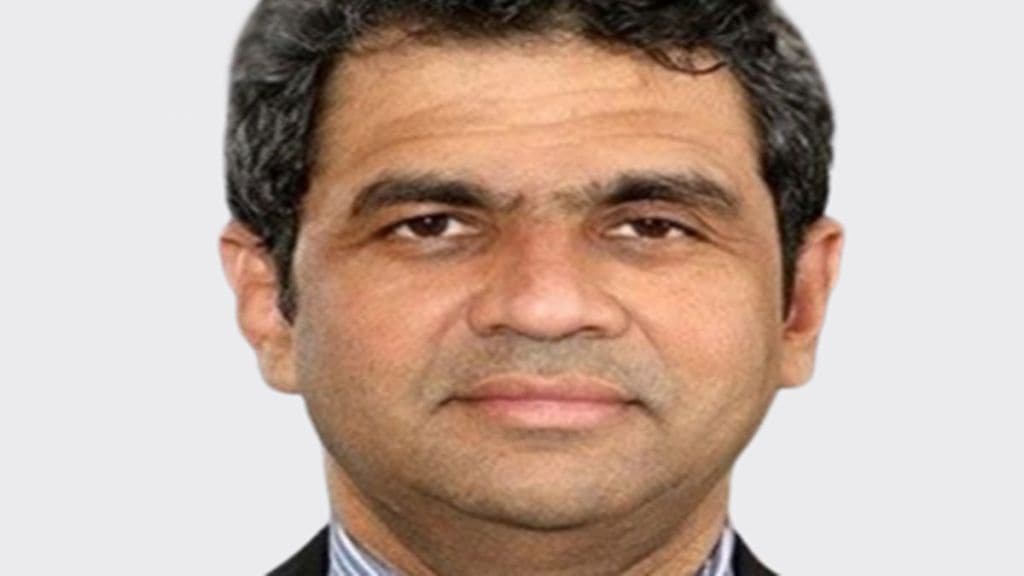Antimicrobial Resistance (AMR) is one of the leading global public health threats. It is estimated that bacterial AMR was directly responsible for 1.27 million global deaths in 2019 and contributed to 4.95 million deaths.
According to the World Health Organization (WHO), The misuse and overuse of antimicrobials in humans, animals and plants are the main drivers in the development of drug-resistant pathogens.
It is noteworthy that AMR makes infections harder to treat and makes other medical procedures and treatments – such as surgery, caesarean sections and cancer chemotherapy – much riskier.
To tackle the growing impact of AMR, many biotech, diagnostics, generics and research-based pharmaceutical companies and associations are joining forces. Recently, Cipla and Orchid Pharma entered into a partnership wherein Cipla will ensure the widespread and rapid distribution of Cefepime-Enmetazobactam, which has been approved for the treatment of complicated Urinary Tract infections (cUTI), Hospital-Acquired Pneumonia (HAP) and Ventilator-Associated Pneumonia (VAP) indications. This partnership is a part of Cipla’s commitment to combat AMR.
In an interaction with Financial Express.com, Dr. Jaideep Gogtay, Cipla’s Global Chief Medical Officer talked about how Cipla is building capabilities and driving stewardship activities to counter the global threat of AMR, the status of AMR in India, current challenges and upcoming plans. Excerpts:
How Antimicrobial Resistance (AMR) is a global public health concern? What is the status as of now?
Antimicrobial resistance is a broad domain that includes infections that are caused by bacteria, viruses, fungi,etc that can no longer treated adequately or effectively with the currently available drugs. Now we generally reserve the term AMR for bacterial infections rather than viral or fungal, because those are also discussed separately. So I think for our purpose we’ll focus on bacterial infections. So antimicrobial resistance for us is essentially when bacteria that caused common infections no longer respond to the current antibiotics that we use now. AMR is a huge issue. Everybody knows by now in the last five years, I think it has been more and more brought to the attention from publications, mainly from The Lancet. So close to 5 million deaths are attributed or associated with the presence of resistant bacterial infections across the world. And that’s massive…including in our country. There are many reasons for this, of course. The one reason could well be that people keep saying that there is overuse and misuse of antibiotics. But there are many other factors. Antibiotics are also used, remember, in the veterinary industry, a lot in food industries, so antibiotics are used across the spectrum, not just in patients or by physicians. And therefore, if we want to consider AMR, we have to consider it holistically.
As you talked about the holistic approach, there’s also a lot of conversation about one health. So does it kind of help that if we, you know look at in a comprehensive way to deal with human health and animal health, can it be possible that we can bring down the prevalence of AMR resistance?
So I think yes, I think it is possible. It needs, of course, all the parties to come together and comprehensively work on looking at how antibiotics are available, or prescribed and used. So, for example, antibiotics are available only on prescription in the livestock industry. In other industries, antibiotics are widely used, but I think even I would not know how much is used. What is the quantum used? Some people say is as much as what is used in humans, or maybe even more. It’s used to prevent any infections from happening. So a huge amount. So everybody has to come together, including the presence of antibodies in the environment. So everyone has to come together if you want to take a company. Just doctors doing something better or just the veterinary industry doing something that is going to be insufficient. Everyone should be together and therefore I think it’s a combination of many things, education policy, data collection on what’s happening across the environment, lots of things have to come together.
Could you also elaborate a bit how what is the impact of AMR in India?
So it’s not easy to get the data to understand the actual prevalence. But I can say that from Lancet data that came from India and Sub-Saharan Africa that South Asia and Sub-Saharan Africa, where the where the highest contributors to resistant infections. India may have an estimated 5,00,000 deaths or even more fair to say from a quantification point of view. But if you look at the ICMR report that comes out every year, they collect data from several tertiary hospitals and they have very well identified that there’s a significant amount of drug resistance in infections that are required in the hospital setting. They are tracking about, I think 20 hospitals across the country. They release a report each year, and even this year’s report is available and you can see a very, very significant amount of drug resistance in our country too. So it is a significant issue in our country. There’s no doubt about that.
We have developed antibiotics over the years and now there is resistance. So what happens when the antibiotics stop working?
So if an antibiotic no longer works, then you have to use the next generation of antibiotics. If even that doesn’t work, you have to use the third or the fourth generation antibiotics, so you have different lines of therapy that that you have in your armamentarium to treat. If the last line of therapy doesn’t work, which does happen, then people could simply die of that infection.
What are some of the disease areas in which the pathogens have developed resistance the most?
So, so broadly, we have two types of pathogens. One is gram-positive pathogens which cause skin infections, eye infections and say bone infections and another is gram-negative pathogens. These more commonly cause urinary tract infections, infections in the abdomen…they cause infections and the bloodstream, all what we see is both groups can have a problem of resistance. But Gram-negative resistance is more common or more a bigger problem in our country than Gram-positive. So you know, in the hospitals when a patient is on the ventilator and if he gets an infection in the hospital, that is very often gram-negative and very difficult to treat. So these are roughly generally the infections where people are focusing on their energies because they are the most difficult to treat.
With the growing burden of antimicrobial resistance, the treatment options of patients are also decreasing. So how like as a pharmaceutical company or as a healthcare stakeholder, how do you see that impacting the public health of India in general?
So one is, of course, the individual himself or herself. If your antibiotic no longer works, then the person is at risk of dying from that infection. On the more public health approach in the hospital setting particularly and some other community settings, these kinds of drug-resistant infections may spread from one person to the other. So if they spread from one person to the other, and if this resistant pathogen becomes more common, they are present in the hospital, they present in the community. I give an antibiotic and after three days you develop resistance for some reason because either you have not taken the dose properly or the dose for you is below or you forget to take your medicine, which happens sometimes. It’s that right from up front that the bug is resistant to the drug. So the public health problem is if such pathogens spread in the hospital setting or in the community, we will have a public health epidemic or if I can use the term something in the pandemic of drug-resistant infections. Some people say this is a silent pandemic that is already there in the world.
So globally, what the pharmaceutical companies are doing and in India, what the companies like CIPLA are doing in this segment? And I also wanted to understand there are a lot of stewardship programs that are being run by companies like Cipla. How does that work?
So I think the pharma companies can play two or three important roles. So one way is to what we call antimicrobial stewardship, where physicians are educated on how to use antibiotics rationally or appropriately…Many hospitals are formulating their policies, regarding which antibiotics to be used in their hospital because they do what is called as surveillance of the pathogens that are there in their hospital. While we have a general idea of what is the trend of pathogens across the country, there could be differences in the hospital in different regions. So therefore many hospitals now are a part of stewardship…it’s important that hospitals also start keeping track of what are the pathogens they have and what is their resistance profile.
The other thing that companies can do worldwide…the pace of antibiotic development has slowed down in big pharma, while you see a lot more drugs in cancer. The pace of drug development has slowed down and very often one of the big reasons that have been cited is the commercial opportunity is very low for antibiotics across the world and this is simply because if you develop a drug for resistant infections, no doctor is going to use it as first-line treatment. After all, in the first line you’ll always use what works which you know works. From a commercial point of view, for many companies, this does not look attractive enough and therefore what we see is that antibiotics are being developed by small and medium-sized companies and by big Pharma. Hardly anybody is doing antibiotic development now.
In India, there are very few drug discoveries happening, but perhaps it is time for us to think a little differently, including for pharma, industry, academia, government, and everybody that perhaps we should look at developing antibiotics from this part of the world where the load of patients is the highest we have the most complex mechanisms and difficult resistance mechanisms.
The government working on how to create incentives for pharma companies to actively do drug development, and if there can be a collaboration across the world to see what kind of drugs we should develop against which pathogens, maybe we’ll have a little brighter future as we go ahead.
As you talked about a partnership you recently, you know entered into a partnership with Orchid Pharma. So what was the objective behind this partnership and how this can address the challenge of AMR?
Orchid Pharma developed something called Enmetazobactam, which is a novel beta-lactamase inhibitor, and combined it with a known antibiotic called Cefepime. So this is primarily being developed for what is called ESBL-Gram negative organisms. So these commonly cause urinary infections, abdominal infections, hospital-acquired
infections. So this is particularly the idea of us working with Orchid. So, ESBLs in the old days were not seen in the community. They were only seen in hospital. Now, increasingly we are seeing that people who get unit tract infections from the community already have resistant bugs and they may not respond to our standard oral antibiotics that we would give them and many of them may need to come into the hospital and take these kinds of antibiotics. Given our surplus commitment to AMR that we have stated earlier, this is certainly something that that that works for us.
Are there any upcoming plans for this partnership?
So we have announced the partnership, which means that the product will be launched and currently our teams are working on that.
So recently Wockhardt also came up with a, you know, antibiotic Zaynich. So they also talked about that, you know, it takes a lot of years to develop such kind of drug. The government has come up with a PLI scheme. What more needs to be done to make a, you know these sort of developments more attractive for the Pharmaceutical industry?
First and foremost, we must have data on the kind of pathogens we have in our country and the kind of resistance mechanisms. So surveillance is extremely important because, without surveillance, we won’t know what kind of antibiotics to develop. So we have the ICMR, which has instituted nationwide surveillance. I think that’s a very positive step in the right direction. The WHO also has a list. India also has come up with a list of critical pathogens, which is very good. We now have some direction that these are the bugs against which you should be useful in India, right? While we have good information on hospitals, I think we also probably as we go ahead need to generate more and more information. Remember India’s vast country. So, we can have more district hospitals, and we can have community-based resistance to monitor, which is not very easy, right? So I think the more surveillance we do, that will be a big positive for the pharma industry to know what antibiotics to develop.
Second, it would say I think we also need companies to take an interest in new antibiotics to be developed. The companies should looks LMICs as part of their commercial evaluation It may not be a blockbuster as people talk about other drugs. There are AMR survivors and they have difficulties. Instead of two days in the hospital, they’re spending 10 days and more amount of money. The risk of dying also gets very high. So, I think it’s a very important medical need that is there. So many governments are offering incentives, whether it is PLI or supporting the development of this work, providing grants. So you can provide grants, foundations willing to provide grants to academics working on this. So I think if we all get together with everyone putting in their efforts there can be a turnaround in this critical area.
What are some of the critical areas and in those critical areas, what needs to be done to improve the status?
So I think one positive thing is we already have a national action plan that was created on AMR which the Government of India created. The importance is obviously to implement, follow-up and make sure that we keep relooking at how to make any changes in the action plan. So regulatory agencies are now coming together. Pharmacists and chemist associations need to come together. Even patient groups should be involved. So as we are building our AMR strategy, which India has…all the stakeholders should come together.
What are the upcoming plans in the area of AMR? How Cipla is looking at this as a business opportunity?
So I will say this in two ways. One is we are committed to the work in antimicrobial resistance, for example, antimicrobial stewardship. There is a campaign that we run every year. Second, we also said that we should develop or bring products to doctors and patients in India which India needs. So that’s something that is always an ongoing priority for a company like ours that brings products, right? And some time ago you may have seen we announced the launch of the introduction of the approval of Plazomicin which is a novel new generation aminoglycoside from that class of drugs after nearly 25 or 30 years. Third, we have been talking to a lot of people about how surveillance could be expanded. I have to say we have not done any specifics in that, but this is something that is in our mind…that we should be discussing with people on how surveillance can be expected. So we are thinking along those lines that these are three or four areas where perhaps we should work.








